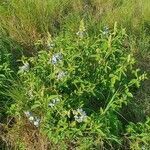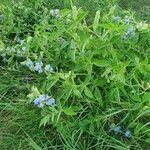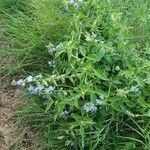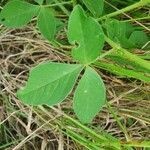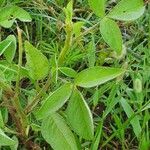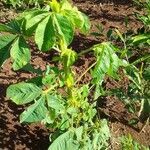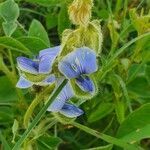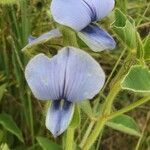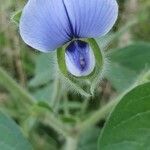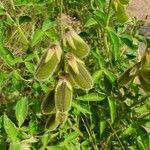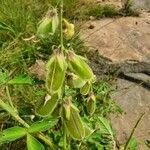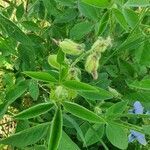An annual herb or shrub. It can grow to 1.2 m high. It is erect with many branches. These are covered with hairs. The leaves are compound with 3 leaflets. The leaflets are 3-7 cm long by 2-4 cm wide. They are narrowly oval and pointed. The flowers are in loose groups or 12-20 flowers. The flowers are blue. The fruit is a pod 4-5 cm long. The seeds are 3.5 mm long.
Standard subcircular, blue, pubescent outside; wings oblong, as long as the keel; keel 1.6–1.8 cm long, bent at right-angles in lower half, with a well developed practically straight beak, densely lanate-pilose on the upper edge.
Leaves all 3-foliolate; leaflets 3–7 × 1.5–3.5 cm, elliptic, pointed, pilose at least beneath; petioles shorter to longer than leaflets; stipules 8–16 mm long, linear-caudate or filiform.
Erect well-branched annual, 30–120 cm tall, with branches densely covered usually by both appressed and longer spreading hairs (sometimes all spreading).
Racemes lax, mostly 12–20-flowered; bracts filiform, 4–10 mm long; bracteoles curved-ascending from just below calyx, 3.5–10 mm long, linear-lanceolate.
Calyx accrescent, 1.4–2(2.4) cm long, hairy; upper lobes lanceolate, c. 3 times as long as the tube.
Seeds c. 3.5 mm long, oblique-cordiform, slightly rugulose, pale brown, mottled darker.
Pod (3.5)4–5 cm long, broadly oblong-clavate, shortly stipitate, pilose.
